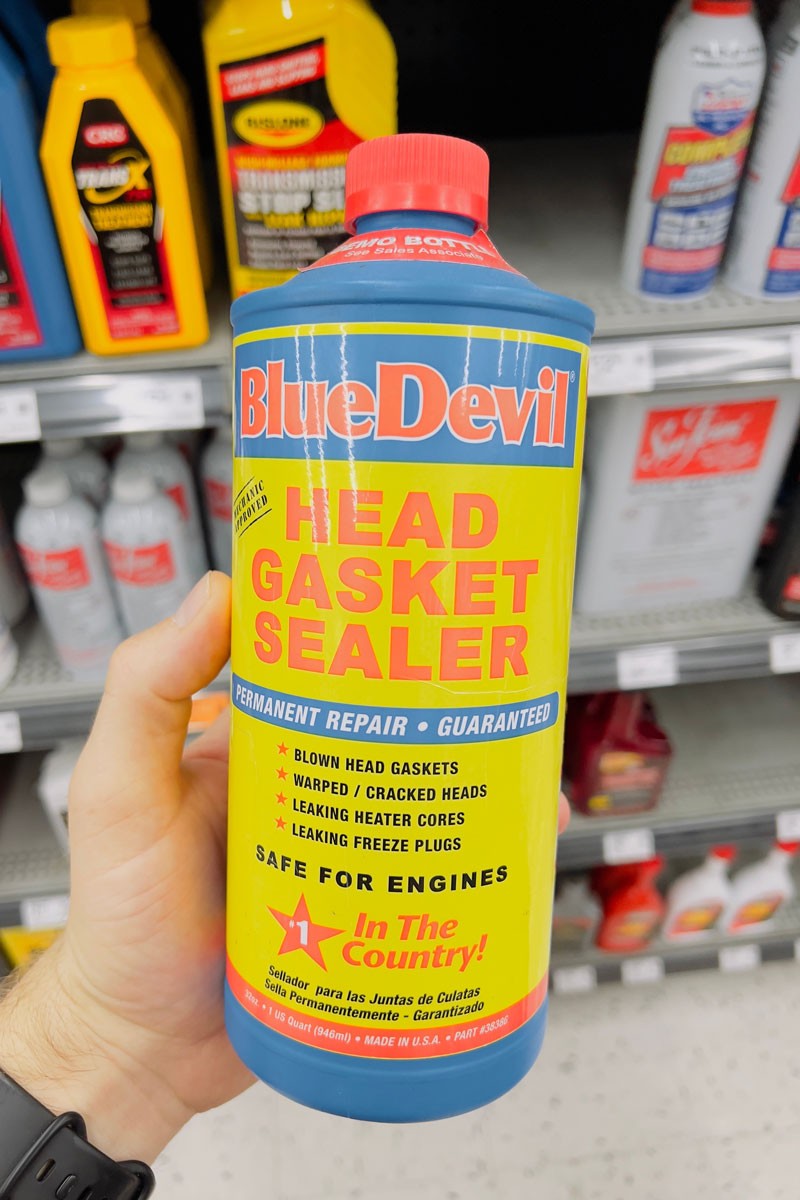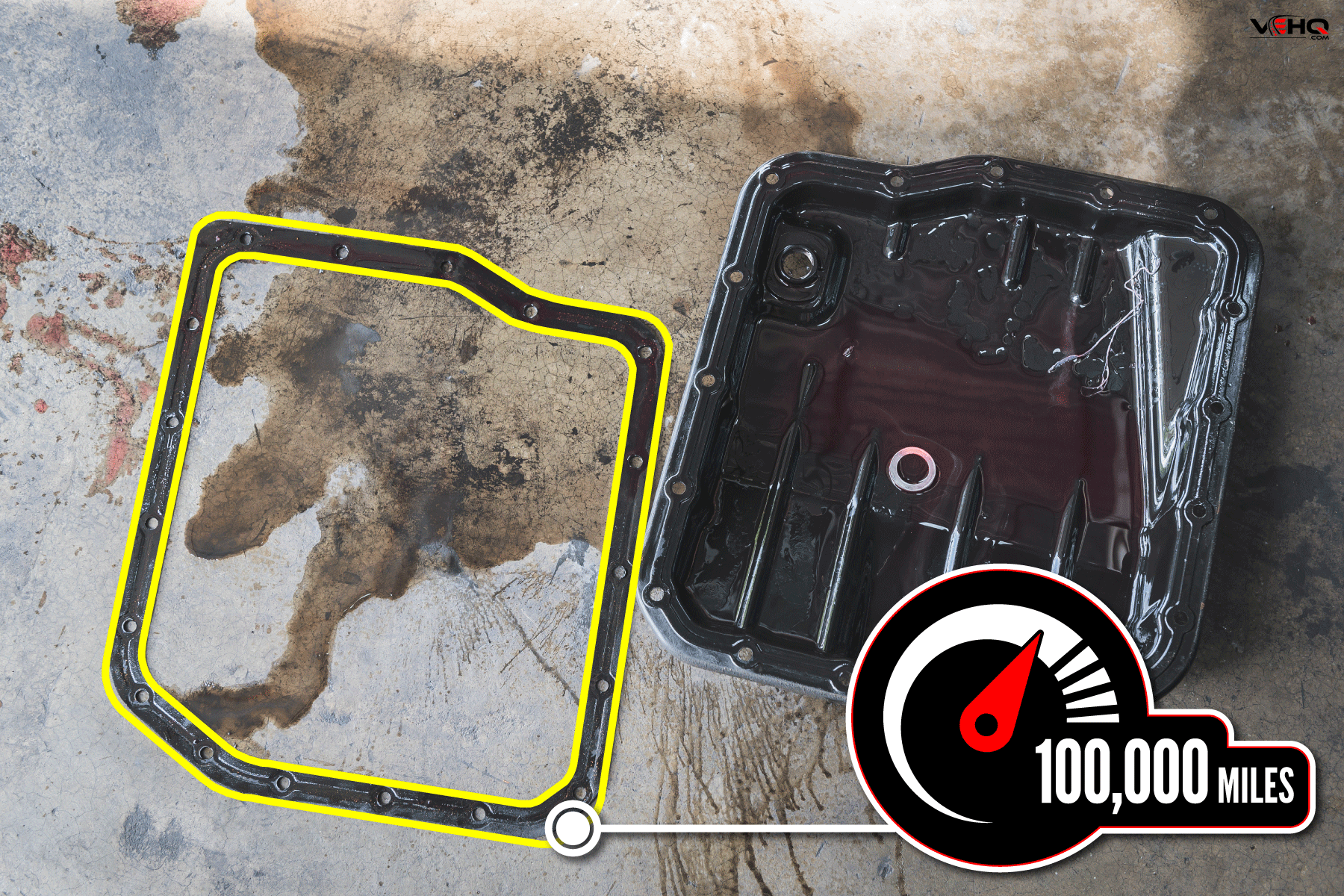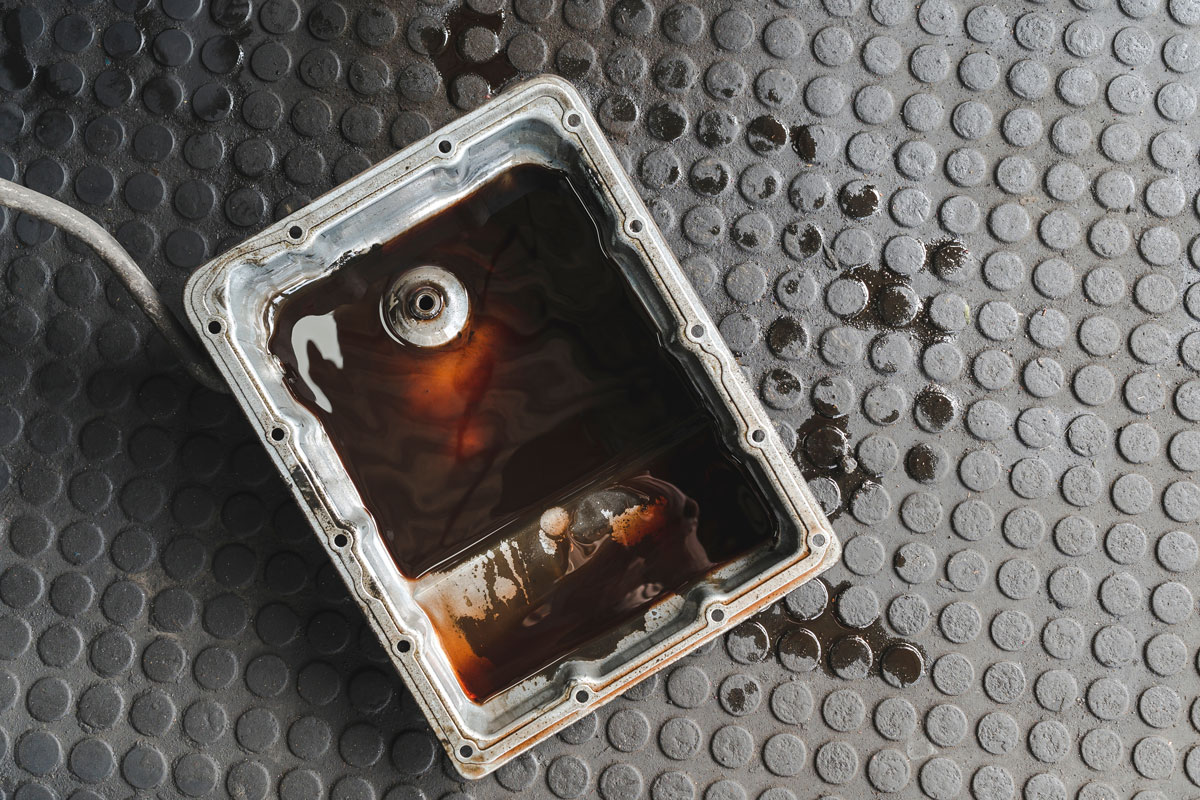Do you need a gasket sealer to optimize the sealing performance of your new or existing transmission pan gasket? Or is a transmission pan gasket enough to keep the transmission fluid in place? We have researched this question, and we have the answer.
Typically, gasket sealers aren't really needed for transmission pans. The pan gasket itself should be sufficient enough to seal the pan from leaking transmission fluid. However, if the mating surface has been reshaped, a gasket sealer may help.
As car owners, we always want the most effective, long-lasting, and cost-efficient solution for our cars. Sometimes, we are torn between the desire to save money versus the desire to get the best solution. Read on as we talk about when and when not to use a gasket sealer.
When Should You Use Gasket Sealer on Transmission Pan?
![]()
A gasket sealer is used when the mating surface of the transmission pan has been reshaped. If the pan is reshaped, it is possible that the gasket seal will not be able to fully make contact with the pan surface.
A gasket sealer can help to ensure that the mating surfaces of the transmission pan and transmission case are properly aligned.
What Causes the Transmission Pan's Mating Surface to be Reshaped?
The main reason why a transmission pan's mating surface is reshaped is due to improper bolt torque setting. In most cases, this problem is caused by the user incorrectly calibrating the torque wrench to the correct torque specification.
Torque specification is a measurement of the amount of force required to tighten a bolt. It is typically written in ft-lbs (feet pounds). If you have a torque wrench, you can measure your own torque specifications.
Typically, 7 to 9 lbs. of torque should be good enough to secure the transmission pan bolts tightly. However, it's still highly recommended to check your car manual for the correct torque setting.
The pan is normally made from either cast aluminum or stamped steel while the bolts are made from steel. Because of the difference in materials, they can react differently to the same amount of torque.
When the bolt is driven too far, an aluminum metal pan is more likely to be deformed than a transmission pan that is made of stamped steel.
Check out this torque wrench on Amazon.
Does It Make Sense to Apply Gasket Sealer When Installing New Transmission Pan Gasket?

One of the first things to check when inspecting your transmission pan is the gasket and its mating surface. You'll know a bad gasket from the way it looks.
Before you dive into replacing it, you might want to consider checking the mating surface if it's still in good shape. If it appears as though you can still get a good seal by directly installing the gasket to the surface, you're safe.
However, if spending a few dollars doesn't bother you, then you can go ahead and apply gasket sealer on top of the transmission pan gasket.
Although this is unnecessary and redundant especially if you're installing a new transmission pan gasket, the extra step won't hurt anything.
How to Install/Replace Transmission Pan Gasket
1. Prepare a catch basin underneath the transmission pan.
2. Jack up the car to a height where you can comfortably crawl under.
3. Using a socket wrench or any similar tool, loosen the pan bolts from the transmission housing.
4. Let the transmission fluid drain.
5. Remove the bolts from the transmission pan and clean them using brake cleaner. Wipe them dry and set them aside.
6. Clean the transmission pan and wipe away excess fluid.
7. The transmission pan has a magnet that pulls and attracts metal shavings. These metal shavings are produced when metal parts rub together during the transmission's operation inside. You might want to clean that as well.
8. Remove the old gasket and install the new one. You can apply gasket sealer (optional).
9. Place two bolts facing opposite corners and bolt them into the transmission case. Don't tighten them yet. Just make sure they are seated properly and have enough torque to hold them in place.
10. Install the remaining bolts in an alternating pattern. If you're installing the left bolt, then the next one should be the right bolt opposite to it. The top bolt should be followed by the bottom bolt, and so on. Don't tighten them yet.
11. When you have all the bolts placed, set the correct torque specifications. Again, in an alternate fashion similar to how you did in step 10.
12. Get ready for your funnel and fill your car with transmission fluid.
13. Turn the engine on for a few minutes. Let the transmission fluid work its way through the transmission system by shifting gears.
Check out this transmission pan gasket sealant on Amazon.
How Often Should I Replace Transmission Pan Gasket?

According to Consumer Reports, cars have their gaskets replaced between 30,000 miles to 100,000 miles. The lifespan of a transmission pan gasket depends on how much heat the gasket is subjected to.
The higher the temperature, the shorter the lifespan of the gasket. High temperatures are almost always caused by low transmission fluid levels.
It's easy to overlook those minor leaks and forget that the transmission fluid has seeped out of the pan. If left unchecked, these small leaks can easily build up over time until the transmission fluid level becomes low enough to cause overheating.
How Much Does It Cost to Fix a Leaking Transmission Pan?
You can expect to pay up to $800 for gasket replacement. This already includes everything from labor costs and the price of parts.
When replacing a transmission pan gasket, it is important to ensure that the vehicle is brought to a qualified mechanic who will be able to properly diagnose the problem.
Not only will they replace the gasket, they will also check if the transmission parts are in good condition and perform other necessary repairs before putting it back together.
The fact that you have your transmission gasket replaced means that the gasket has given up and as we pointed out earlier, gaskets give up when they are stretched beyond their capacity to handle heat.
This also means that some of the transmission parts might have also been damaged or worn down as a result.
It is possible for the cost of the transmission repair to be high, depending on how many problems you have. Some common transmission problems include slipping or stuck gears, delayed shifting, and clunking noises when shifting gears.
I Lost One of the Transmission Pan Bolts. Should I Worry?
It depends on how early you've detected the problem. You shouldn't be experiencing a massive leak in one or two days' time and should be able to drive your car without causing serious damage. However, you should get it fixed sooner than later, or else you could end up with an even more expensive repair.
What is the Best Gasket Sealant for Transmission Pan?
You may wonder why you would want to use silicone sealant when you already have a transmission pan gasket. As discussed earlier, transmission pan gasket sealants are designed to be a secondary line of defense against leaks. It's an option that you may or may not take.
Silicone sealant is the best product to use when you want to add a secondary level of protection against leaks. Most gaskets will wear out quickly with constant exposure to high temperatures, causing leaks. Using silicone gaskets will extend your gasket's life.
Can I Just Reuse Transmission Pan Gasket and Fix the Leak by Applying Gasket Sealant?

A transmission pan gasket is meant to be replaced when worn. While a gasket sealant may provide temporary relief from leaking, you will find that it's not worth the time and effort.
This is because sooner or later, the sealant won't be able to take the fluid pressure all by itself. Besides, gasket sealants can only effective if the gasket is still functional.
If the latter has been worn out, it's already been compromised and can no longer hold the transmission fluid.
How to Check Transmission Fluid Level
When the transmission fluid level is low, there's no telling what kind of damage can occur if left undetected for too long. If you don't perform this basic maintenance on your car, then you're at risk of being stranded on the road.
The first thing to do when checking transmission fluid levels is to determine how much fluid you have left in the car. To do this, turn on the engine and let the car idle on a flat surface. Look under the hood for a dipstick, on the engine's left side.
With the engine still running, pull the dipstick out and wipe any excess fluid that may have dripped off. Reinsert the dipstick and pull it out and take your reading. Dipsticks have markings that tell you how much fluid is in your transmission.
Other car brands like Honda don't require you to start the car to get an accurate reading. Others don't even provide dipsticks and have their own way of checking transmission fluid levels. Always check your car manual for the right procedure.
What Happens If I Top Up Too Much Transmission Fluid?
Putting too much transmission fluid will cause fluid resistance to the moving parts of the transmission system, especially the crankshaft. The excess volume and viscosity will cause the crankshaft to rotate slower than normal.
In Closing
Gasket sealers are not necessary for transmission pans. However, if your pan has been reshaped, a gasket sealer may help. Gasket sealers are designed to create a smooth surface that will better seal against the mating pan surface. A slight distortion of the mating surface is enough to create a leak path.
You might also like:
Why Check Transmission Fluid When Engine Is Running?
Can Transmission Fluid Get Low Without A Leak? [6 Points To Check]


